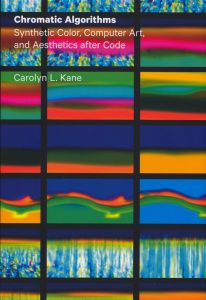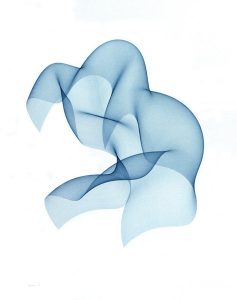When I read the description for “Waves,” I thought, ok, I’m going to watch a video of some sine waves. When I pressed play, I was blown away. The video completely transformed my emotional state, and then some. I was immediately lulled into a calm, the sort that is stereotypically ascribed to spending time by a body of water. I could even hear the sounds of an ocean. I found myself raising the volume on my computer to try to hear the sound better–only to realize that the video had no sound, and the sound was in my head, brought up from my memory by the video itself.

On the project’s site (linked at the top of the post), LIA doesn’t go into too many details about the algorithms by which she made “Waves,” but the project description explains that the algorithms allow for changes in rhythm and scale while keeping the direction constant. It is all randomly determined, making for endlessly new patterns. She calls it a “motion painting.” It reminds me of the exercises we did in class today, with the circle moving back and forth at different speeds–but it’d be as if the circle were allowed to leave the canvas and endlessly new, randomly-generated circles appeared directly behind it, forever.
In the About section on her website, LIA states that her minimalist work combines traditional drawing and painting with new digital and algorithmic aesthetics. The bio continues: “She focuses on the translation of certain experienced principles into abstract forms, movements and colours in order to allow the viewer to explore the same on a subconscious level.” I can attest to her success at that from my experience of “Waves.”
As highlighted on the project site, “Waves,” was displayed as part of a concert in 2017. I think “Waves” begs to be combined with music, as my response, which was also aural, did.

![[OLD FALL 2017] 15-104 • Introduction to Computing for Creative Practice](../../../../wp-content/uploads/2020/08/stop-banner.png)





